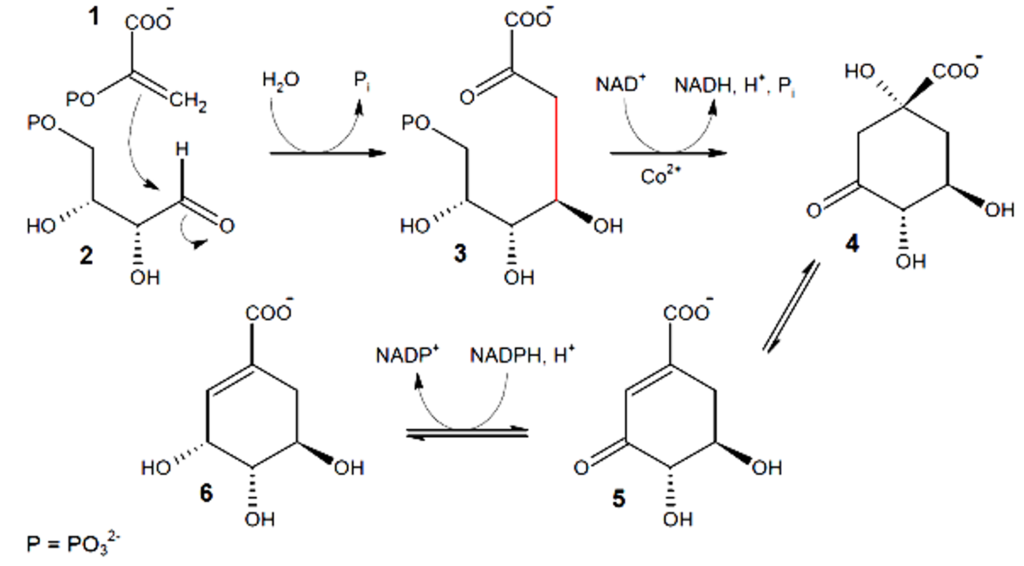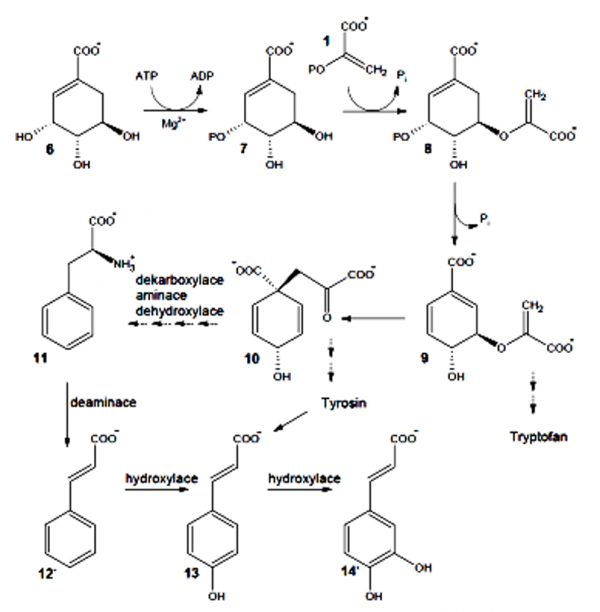Interesting facts from the world of organic chemistry
Derivatives - carboxylic acids:
Caffeic acid
Caffeic acid is a chemical compound containing in its structure a benzene nucleus and a carboxyl group -COOH. This acid most often appears in coffee, or cinnamon. Together with ferulic acid, cinnamic acid and some other acids, it is classified as hydroxycinnamic acids. Caffeic acid and some of its derivatives show a number of pharmacological and biological effects. These effects are caused by the specific structure of the acid and some of its derivatives.

The synthesis of caffeic acid takes place biochemically. The starting substrates for the biosynthetic preparation of this acid (and other polyphenols) are the amino acids tryptophan, tyrosine and phenylalanine. At the very beginning of the metabolic pathway are D-erythrose-4-phosphate and phosphoenolpyruvate. After several subsequent reactions, shikimic acid (see figure below) is first formed, which is not just an unstable intermediate, but a truly isolable compound. Its first successful isolation was made from the fruits of Badyáníku pravého.

The synthesis of caffeic acid can be carried out by a rather complex biosynthetic pathway from shikimic acid:

Resources:
[1] J. Ralph and Y. Zhang, “Agricultural Research Service,” 1998. [Online]. Available: http://www.dfrc.ars.usda.gov/DFRCWebPDFs/1998-Ralph-Tet-54-1349.pdf. [Accessed 7 6 2013].
[2] M. Bolognini, F. Cavani, L. D. Pozzo, L. Maselli, F. Zaccarelli, B. Bonelli, M. Armandi, and E. Garrone, “ScienceDirect,” 21 5 2004. [Online]. Available: http://www.sciencedirect.com/science/article/pii/S0926860X04004703. [Accessed 7 6 2013].
[3] J. Moravcová, in Biologically active natural substances, Prague, VŠCHT Prague, 2006.
[4] OSHA, “United States Department of Labor,” 30 3 2007. [Online]. Available: http://www.osha.gov/dts/chemicalsampling/data/CH_238925.html. [Accessed 7 6 2013].
